As costs for electricity continue to soar, using power sparingly is no longer a matter of frugality or eco-friendliness but one of necessity. However, most of us live busy lives. Thus, it is easy to forget to switch off all your lights in the morning. You can automate this process without converting your entire house into a smart home or using app-enabled smart lighting. Adding a simple dusk-to-dawn light sensor can be more energy efficient and help you save on energy costs.
What is a Dusk-to-Dawn Light Sensor?

A sunset at sea signifies the beginning of dusk.
In the past, most light sensors were motion sensors. For instance, the ones you typically see in LED floodlights. Nevertheless, dusk-to-dawn light sensors only activate after the sun has gone down instead of activating when they sense movement. We use them to automatically switch (mostly outdoor) lights on and off depending on the time of day. This allows us to reduce energy consumption.
How Do Dusk-to-Dawn Light Sensors Work?
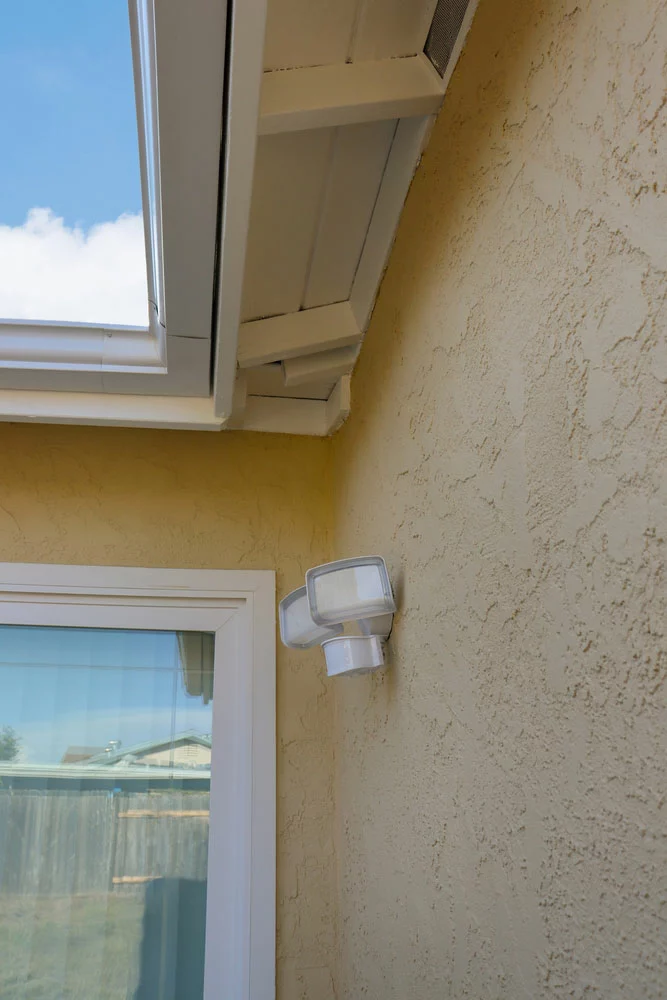
Dusk to-Dawn Motion Sensor
There are two types of dusk-to-dawn light sensors:
Photocell dusk to dawn light sensor
It absorbs and measures ultraviolet and infrared light. If the amount of light reaches a certain low point, the sensor will turn on the lights. Some photocell dusk-to-dawn sensors also contain motion sensors.
Time-controlled dusk-to-dawn light sensor
These types of dusk-to-dawn light sensors are not sensors. They use a clock device to determine what time of day it is. You can use these sensors to customize the time your lights switch on and off.
Can You Add a Dusk to Dawn Sensor to Any Light Fixture?

Builder screwing in a light bulb
It is possible to add a dusk-to-dawn sensor to any light fixture. However, we recommend using LED-based light bulbs and fixtures.
Adding an LED light sensor bulb can convert any light into a dusk-to-dawn-enabled light fixture. These light bulbs come with photocell sensors that detect the amount of natural light around your house. In many cases, you do not have to replace the entire fixture. Instead, there are many options you can use to modify your current fixture.
What to Do When Your Dusk-to-Dawn Light Sensor Is Not Working?
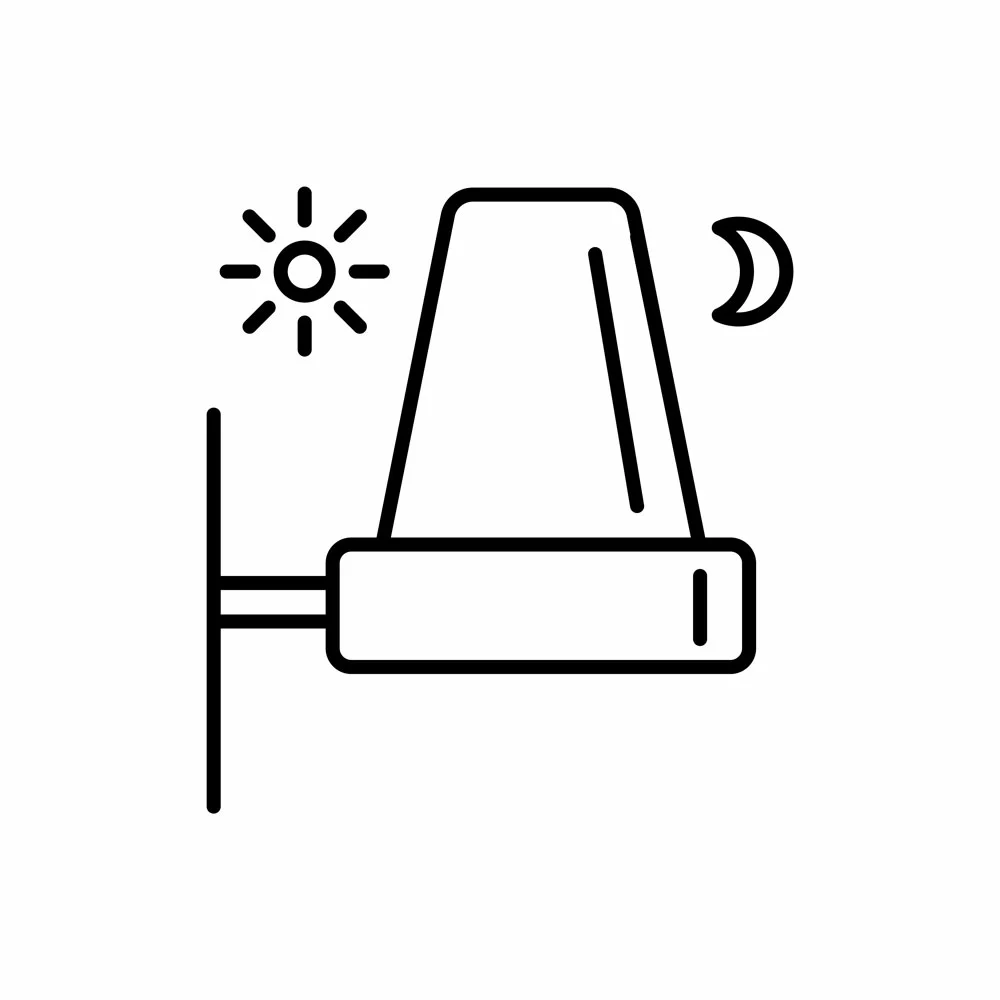
Dusk to dawn light sensor vector image
Troubleshooting dusk-to-dawn light sensors can be tricky. In most cases, you must wait till the sun is down before you can effectively test them.
Nevertheless, your dusk-to-dawn light sensors may have been working all along but have suddenly stopped. Here are a few reasons and possible fixes for malfunctioning dusk-to-dawn light sensors:
Dead Light Bulbs
In some cases, the issue may not be related to the sensor. Your light bulb(s) or light source may be dead. Try replacing them to see if that will remedy the issue.
Blocked or Obstructed Sensor
Your light sensor may be obstructed by some dirt, foliage, debris, or shade from trees, causing your light sensor to malfunction. Wipe any dirt or obstructions on your dusk-to-dawn light sensor and ensure no shade or object is blocking it.
Dead or Damaged Photocell
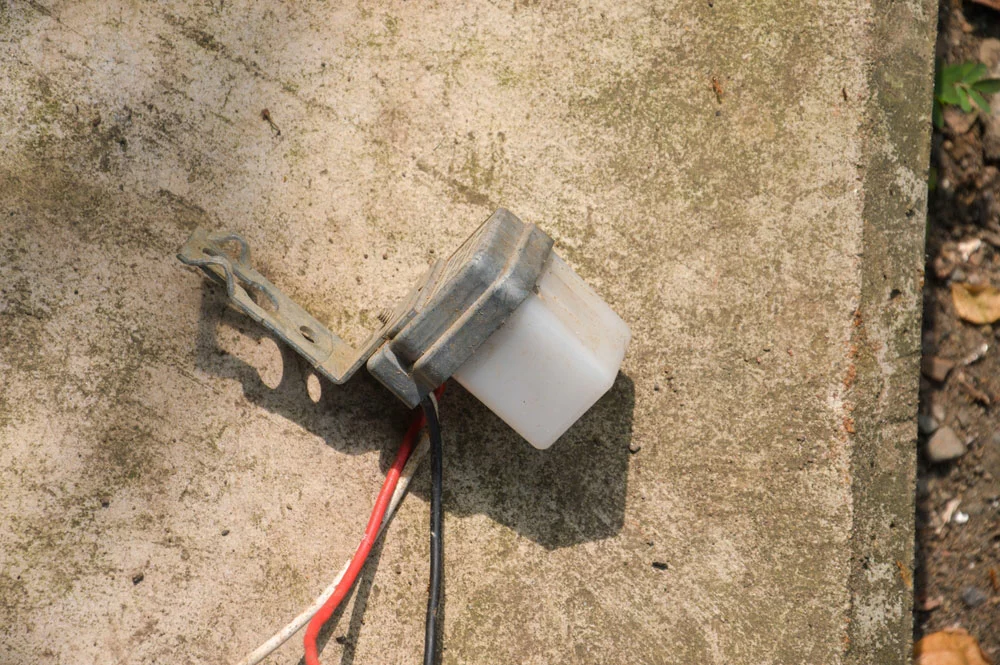
Image of photocell
In some very rare cases, your dusk-to-dawn light sensor’s photocell(s) may be damaged. While photocells typically last up to a decade, you may have had the misfortune of purchasing a faulty one. If your light sensor is still under warranty, make sure that you get it replaced as soon as possible.
Faulty, Loose, or Damaged Wiring
Your wires may not be connecting to your light sensor or fixture effectively. Thus, you must check for faulty or loose cables or electrical wiring.
Fluctuating Voltages
Your home’s voltage should be as consistent as possible. While transient fluctuations in voltage do occur from time to time, regular fluctuations can damage your lights and your dusk-to-dawn sensor. Your home’s outlets should maintain voltages between 110 and 120 at 60 Hz.
System Issues
If you use an advanced smart home or time-controlled dusk-to-dawn light fixture, you will encounter some system issues. Microcontrollers and embedded processors tend to power and control the light sensors. When one of these sensors fails to restart correctly after a power outage, the software/hardware can crash or freeze. You will need to restart your light sensors to remedy this issue.
How to Test a Dusk-to-Dawn Light Sensor?
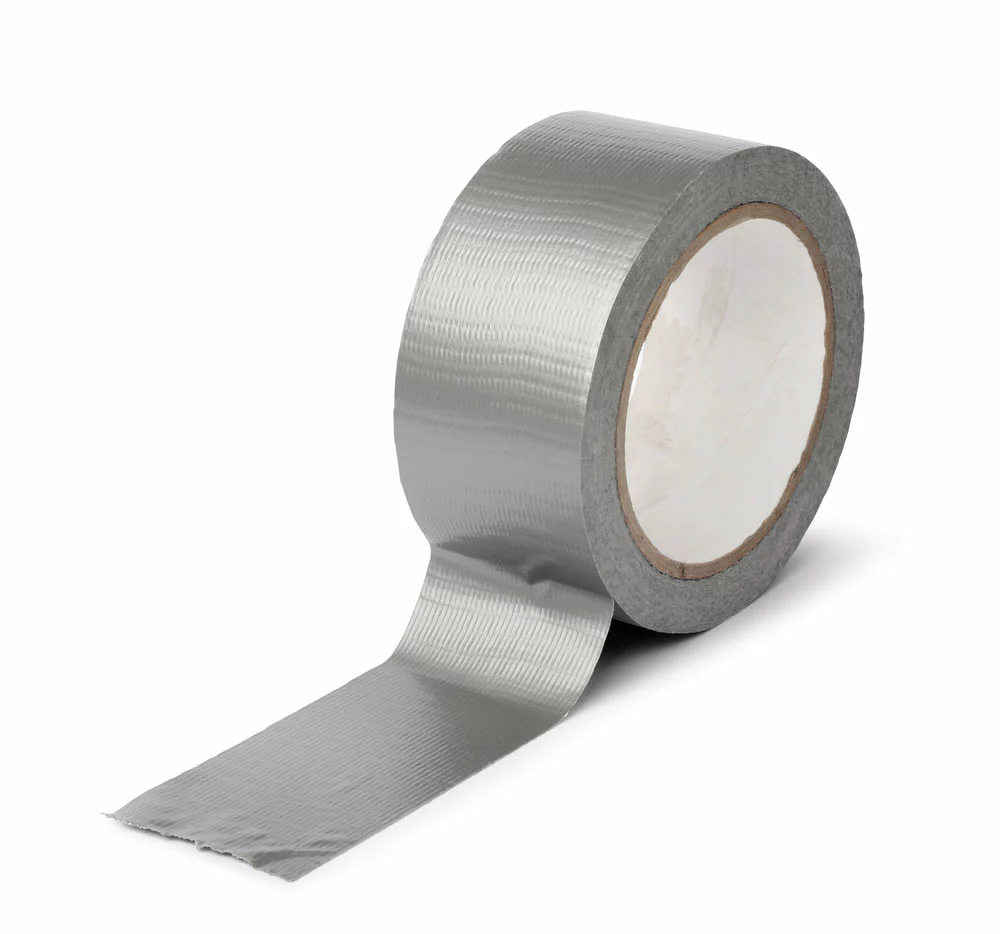
Roll of duct tape to test the light sensor
The best way to see if your D2D light sensor works is by waiting until dark. However, if you find it impossible, your other options cover the light sensor. You can try using thick pieces of duct tape. Tin foil or aluminum would work far better as it reflects light.
Best Dusk-to-Dawn Light Sensors
Some of the best dusk-to-dawn light sensors and bulbs include:
- Zeben Dusk-To-Dawn LED Radar Motion Detector Light Bulbs
- ZJOJO LED Wall Pack Light
- AmeriTop 3500LM Outdoor Dusk-To-Dawn Sensor Lights
- Aukora Dusk-To-Dawn Sensor Light Bulb
- EMANER Solar Dusk-To-Dawn and Motion Sensor Light
- Philips E26-800lm
- Sunco A19-800lm
- MINGER E26/E27-600lm
- Vgogfly E26/E27-600lm
- LOHAS E26-500lm
What Causes a Dusk-to-Dawn Light to Stay On?
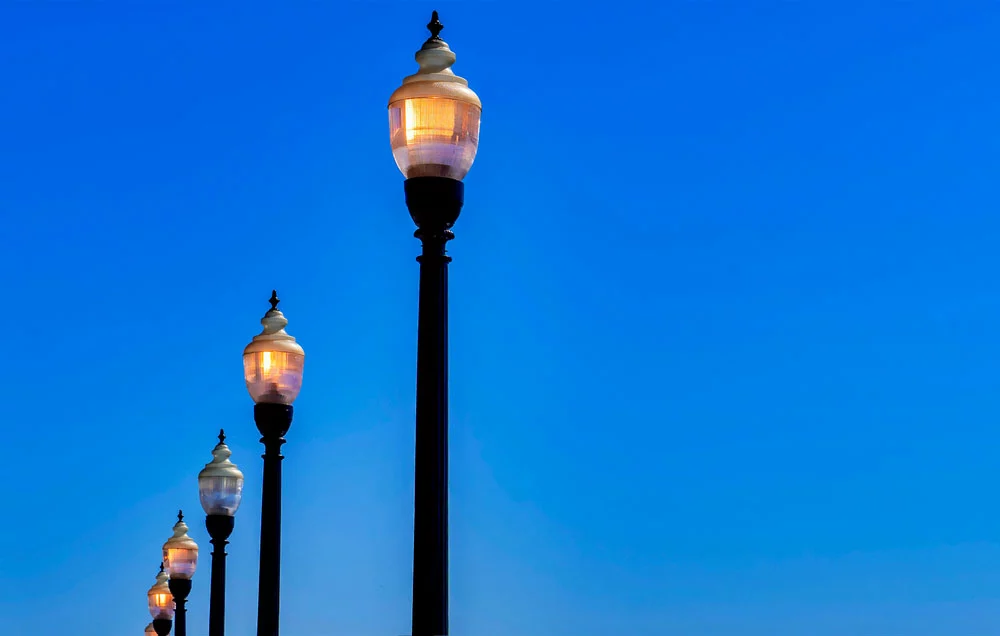
Light glowing during the day
Sometimes, your D2D lights may stay on because of a fault. Here are a few examples of common faults and how to fix them:
High Sensitivity
You can adjust the sensitivity of some light sensors. Sometimes, your D2D sensor’s sensitivity may be too low. Thus, it interprets any low light coming from a cloudy sky as dusk. Read the D2D sensor’s manual to see if it has sensitivity adjustment settings and act accordingly.
Positioning
Again, you may have placed your sensor in a shaded area or behind an obstruction. Adjust the positioning of the sensor to optimize the absorption of light. It would be best to place the dusk-to-dawn light sensor in direct sunlight.
A faulty photocell
Your photocell may have a fault that keeps it from correctly detecting natural light. You must replace the photocell if this is the case.
Do Dusk-to-Dawn Lights Stay on All Night?
It depends on how you define “night” in your region. For instance, countries like Norway can experience a 40-minute night where the sun sets for only 40 minutes. This can result in long hours of light. But in most cases, your D2D lights will stay on while it is dark. You can adjust them to act differently. However, this would be ill-advised.
Conclusion
You can remedy many dusk-to-dawn sensors and light-related issues by rebooting your unit. However, sometimes you must completely replace the faulty sensor or entire fixture. In such cases, hiring an experienced certified electrician would be best. Nevertheless, D2D light sensors can provide more eco-friendly lighting while shaving dollars off your electric bill. You can contact us if you have any questions.
